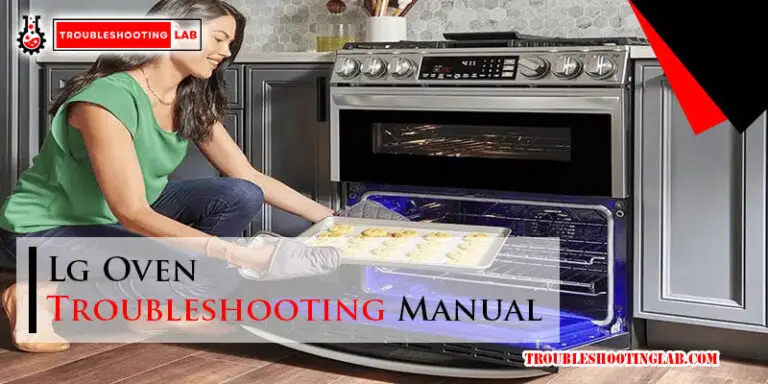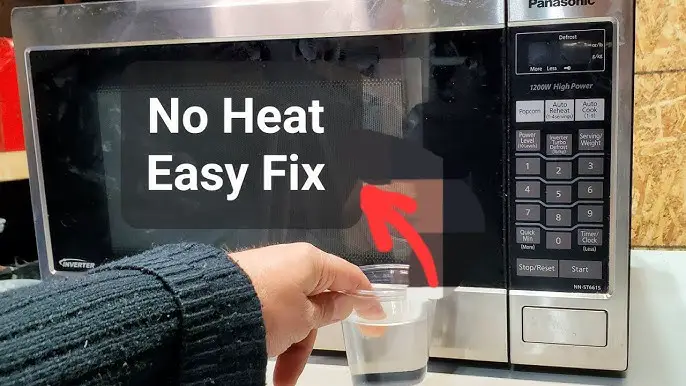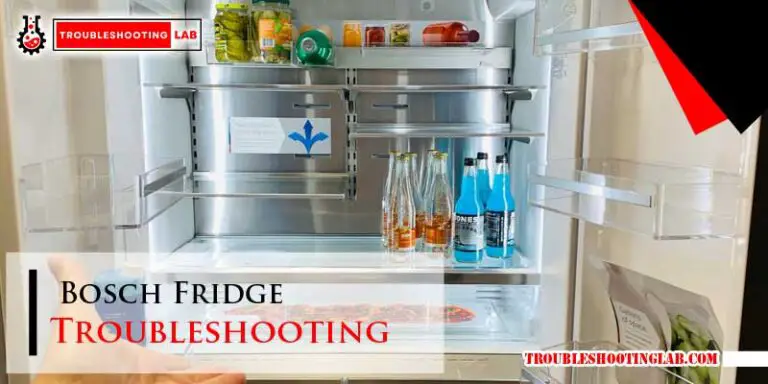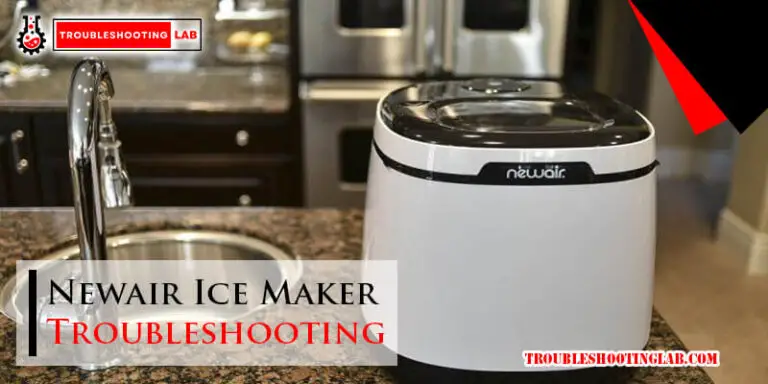Beko Dishwasher Troubleshooting: Quick Fixes for Common Issues
Picture this: it’s the end of a long day, and the last thing you want to deal with is a dishwasher that’s acting up. You rely on your Beko dishwasher to make life easier, but suddenly it’s not running as smoothly as it should.
Frustrating, right? But don’t worry—you’re not alone, and there’s a solution waiting for you. Imagine the relief of knowing exactly what to do when your trusty appliance decides to throw a tantrum. Whether it’s dishes coming out dirty, mysterious noises, or a machine that just won’t start, these common issues have straightforward fixes.
You deserve a dishwasher that works as hard as you do, and with a little guidance, you’ll have it back to its old self in no time. You’ll find simple, step-by-step troubleshooting tips that will empower you to tackle those pesky problems head-on. Let’s dive into the world of Beko dishwasher troubleshooting and get your kitchen routine back on track.
Credit: www.reddit.com
Common Start-up Problems
Starting a dishwasher should be simple. Yet, many encounter issues. Beko dishwashers can face common start-up problems. These issues often confuse users. Knowing these problems helps in troubleshooting. Let’s explore solutions for two frequent issues.
Dishwasher Not Turning On
The dishwasher may not start. Check the power connection first. Ensure the plug is secure. Test the outlet with another appliance. Inspect the circuit breaker. It might have tripped. Reset if necessary. Look for a faulty door latch. The dishwasher won’t start if the door isn’t closed properly. Examine for debris or damage. Clean the latch gently. Replace if broken.
Examine the control panel. Faulty buttons can cause issues. Press them firmly. If they feel stuck, clean them. Use a damp cloth. Faulty wiring may be the problem. Inspect cords for wear. Replace damaged cables promptly.
Error Codes Displayed
Beko dishwashers show error codes. Each code indicates a specific issue. E01 signals a door problem. Check the latch as mentioned. E02 involves water intake problems. Inspect the water supply valve. Ensure it’s open and unobstructed. E03 suggests a drainage issue. Examine the drain hose. Remove any clogs or kinks.
Refer to the user manual for other codes. It provides detailed explanations. Error codes simplify troubleshooting. Reset the dishwasher after resolving the issue. Unplug it for a few minutes. This can clear errors from memory. Regular maintenance prevents recurring problems. Clean filters and inspect parts regularly. Keep your dishwasher running smoothly.
Water Supply Issues
Water supply issues are among the most common problems faced by Beko dishwasher users. Whether it’s due to a faulty connection or an internal malfunction, these issues can disrupt your routine and leave you in a bind. Understanding the root cause of these problems can save you time and money. Let’s dive into some practical troubleshooting tips for water supply issues.
Dishwasher Not Filling With Water
If your Beko dishwasher isn’t filling with water, the issue might be simpler than you think. Start by checking the water inlet valve. Is it fully open? Sometimes, a quick check and adjustment can solve the problem. Remember the time when a simple twist fixed the issue, and I was back to doing dishes within minutes? It can be that easy!
Another culprit might be the door latch. If the door isn’t closing properly, the machine won’t start the water cycle. Ensure the door is securely shut. Have you ever inadvertently left the door ajar and wondered why the dishwasher wasn’t working? A small oversight can have a big impact.
Still no luck? Examine the float switch. This component regulates the water level in the dishwasher. If it’s stuck, it might prevent water from entering. A gentle nudge can often free it up. Could something simple be hindering your dishwasher’s performance?
Water Leaking From Dishwasher
Leaking water can be both frustrating and damaging. First, inspect the door gasket. If it’s worn out or damaged, it may not seal properly. A quick replacement could be all you need to stop the leak. Think back to when replacing a small rubber piece saved you from a flood of problems.
Check the hoses connected to your dishwasher. A loose or cracked hose can lead to water leaks. Tighten connections and replace any damaged parts. Consider this: how often do you overlook these simple connections that play a crucial role?
Finally, ensure the dishwasher is level. An uneven machine might cause water to escape during cycles. Adjust the legs to balance the unit. Have you noticed that small adjustments can lead to big improvements in your appliance’s functionality?
By addressing these water supply issues, you can ensure your Beko dishwasher runs smoothly. What other simple fixes can you explore to enhance your daily routine?
Cleaning Performance Troubles
Beko dishwashers are known for their efficiency and reliability. But, sometimes they can face cleaning performance issues. These problems can be frustrating. This section will address common issues like dishes not getting clean and residue on glassware.
Dishes Not Getting Clean
Are your dishes coming out dirty? Check the spray arms first. They might be blocked by food particles. Clean them thoroughly to ensure water flows freely. Also, make sure the dishwasher isn’t overloaded. Too many dishes can block the water spray. Properly space your dishes for optimal cleaning.
Detergent choice can affect results too. Use the recommended amount and type. Hard water can also impact cleaning. Consider using a water softener if needed. Regular maintenance and correct use can prevent many issues.
Residue On Glassware
Residue on glassware can be a common problem. It often results from using too much detergent. Reduce the amount and see if it helps. Check the rinse aid level as well. Rinse aid helps to prevent water spots and residues.
Inspect the water temperature setting. It should be at least 120 degrees Fahrenheit. This ensures detergent dissolves properly. Regularly clean the filters to maintain optimal performance. Residue can build up and affect the cleaning cycle.
Unusual Noises During Operation
Does your Beko dishwasher make strange noises? This might be a concern. Unusual sounds during operation can indicate problems. Understanding these noises helps in quick troubleshooting.
Rattling Or Banging Sounds
Rattling or banging often results from loose items. Check if dishes are touching each other. Make sure utensils are not hitting the walls. Incorrect loading can also cause this noise. Reorganize the items if needed. Use the dishwasher’s manual as a guide.
Grinding Noise
A grinding noise suggests a mechanical issue. It could be due to debris in the pump. Check the filter for any blockages. Remove any trapped food particles or objects. Clean the filter regularly to avoid this problem. If the noise persists, a professional inspection may be necessary.
Drainage Challenges
Dealing with drainage challenges in your Beko dishwasher can be frustrating. These problems often disrupt your routine and create a mess. Understanding the common causes helps in resolving these issues quickly. Let’s explore some typical drainage problems and how to fix them.
Water Not Draining
Water staying at the bottom of the dishwasher is a common issue. This might mean something is blocking the drainage system. Check the drain hose for kinks or clogs. A bent hose can prevent water from flowing out. Also, ensure the dishwasher is level to allow proper drainage.
Clogged Drain Filter
A clogged drain filter can stop water from draining. Food particles and debris often block the filter. Regular cleaning keeps it clear. To clean, remove the filter from the bottom of the dishwasher. Rinse it under warm water to remove any debris. Make sure to replace it properly after cleaning.
Door Lock And Seal Concerns
Experiencing door lock and seal issues can disrupt your Beko dishwasher’s performance. These concerns often lead to leaks and inefficient washing cycles. Regular checks and maintenance can prevent these common problems, ensuring your dishwasher functions smoothly.
If you’ve ever found yourself struggling with a Beko dishwasher that won’t close properly or noticing water puddles around your kitchen floor, you’re not alone. Door lock and seal concerns are common issues that many Beko dishwasher owners face. These challenges can disrupt your daily routine and cause unnecessary stress. Addressing these problems promptly can save you time, money, and preserve your peace of mind. Let’s dive into understanding these issues better and how you can tackle them effectively.Dishwasher Door Not Closing
A dishwasher door that refuses to close can be incredibly frustrating. This issue often stems from misaligned racks or an obstruction along the door’s path. Check if any large utensils or dishes are blocking the door. Adjust the placement of your dishes to ensure the door can shut smoothly. Sometimes, the latch mechanism itself might be faulty. Inspect the latch for any visible damage. If it’s broken, replacing the latch might be necessary. Have you ever tried to close the door only to realize something tiny, like a fork, was sticking out? It happens to the best of us, and a quick rearrangement can solve the problem.Leaky Door Seal
A leaky door seal is more than just a nuisance; it can lead to water damage in your kitchen. The seal or gasket around the door may wear out over time, causing leaks. Feel around the seal for any cracks or brittleness. If the seal feels stiff or has visible tears, it’s time for a replacement. Cleaning the gasket regularly can prevent build-up, which often leads to improper sealing. A simple wipe down with a damp cloth can do wonders. Have you ever considered how a small leak could escalate into a bigger issue if left unchecked? Addressing the seal promptly can prevent this headache. Taking a proactive approach to these door lock and seal concerns can keep your Beko dishwasher running efficiently. Have you experienced other dishwasher woes? What quick fixes have worked for you? Share your insights and help others tackle these common issues head-on.Electrical And Display Issues
Experiencing electrical and display issues with your Beko dishwasher can be frustrating. These problems often arise from minor glitches or power disruptions. Understanding the common issues can help you troubleshoot effectively. Let’s explore some typical display problems and their solutions.
Flickering Display
A flickering display might indicate a power supply issue. Check if the dishwasher is properly plugged in. Ensure the power cord is not damaged or loose. A flickering screen can also result from an unstable power source. Consider checking the circuit breaker for any tripped switches. If the display continues to flicker, there might be a fault in the display panel itself. In such cases, professional assistance may be necessary.
Buttons Not Responding
If the dishwasher buttons are unresponsive, first check if the child lock feature is activated. This feature prevents accidental button presses. Deactivate the child lock by following the user manual instructions. If buttons remain unresponsive, inspect for any visible dirt or debris. Clean the buttons gently with a damp cloth. Persistent issues might suggest a faulty control board. Seek professional help to diagnose and fix the problem.

Credit: blog.usro.net
Maintenance Tips
Struggling with your Beko dishwasher? Check for blockages in the spray arms and filters. Ensure the door seals are clean to prevent leaks.
Keeping your Beko dishwasher in top shape doesn’t require a degree in engineering. With a few simple maintenance tips, you can ensure your appliance runs smoothly and efficiently. Let’s dive into some straightforward steps you can take to keep your dishwasher in prime condition.Regular Cleaning
Regular cleaning is essential to prevent build-up of grease and food particles. Clean the filter weekly by removing it and washing it under warm water. Use a soft brush to scrub away any stubborn residues. Have you noticed any unpleasant odors? Running an empty cycle with a cup of white vinegar can help eliminate these smells and leave your dishwasher smelling fresh.Inspecting Key Components
Regularly inspect the spray arms for clogs. Remove them and rinse under water, using a toothpick to clear any blocked holes. Check the door seals for cracks or food debris. Wipe them with a damp cloth to ensure they seal properly, preventing leaks. Don’t forget to examine the detergent dispenser. Make sure it opens smoothly and is free from detergent build-up. By taking these steps, you ensure your Beko dishwasher runs efficiently, saving you time and reducing potential repair costs. Remember, a little attention now can prevent larger problems in the future. Are there other maintenance tips you swear by? Share your experiences in the comments below!
Credit: www.reddit.com
Frequently Asked Questions
Why Won’t My Beko Dishwasher Start?
Check the power supply. Ensure the door is fully closed. Inspect the control panel for errors.
How Do I Fix A Leaking Beko Dishwasher?
Examine the door seal for damage. Check hoses and connections. Tighten any loose parts.
Why Is My Beko Dishwasher Not Drying Dishes?
Ensure the rinse aid dispenser is full. Use a proper drying setting. Avoid overloading.
How Can I Unclog My Beko Dishwasher?
Remove food debris from the filter. Clear the spray arms. Ensure drain hose is not blocked.
Why Is My Beko Dishwasher Making Noise?
Inspect for loose items. Check spray arms for obstructions. Tighten any loose parts or screws.
Conclusion
Exploring Beko dishwasher troubleshooting can save time and stress. Simple checks often solve issues quickly. Regular maintenance prevents future problems. Always refer to your user manual for guidance. This helps avoid unnecessary repairs. Keep your dishwasher clean and functional. Use proper detergents for best results.
Seek professional help if needed. Remember, a well-maintained appliance runs efficiently. Enjoy hassle-free dishwashing with these tips. Protect your investment with smart care. A few minutes of attention make a big difference. Your dishwasher deserves the best care. Keep it running smoothly, and enjoy peace of mind.


